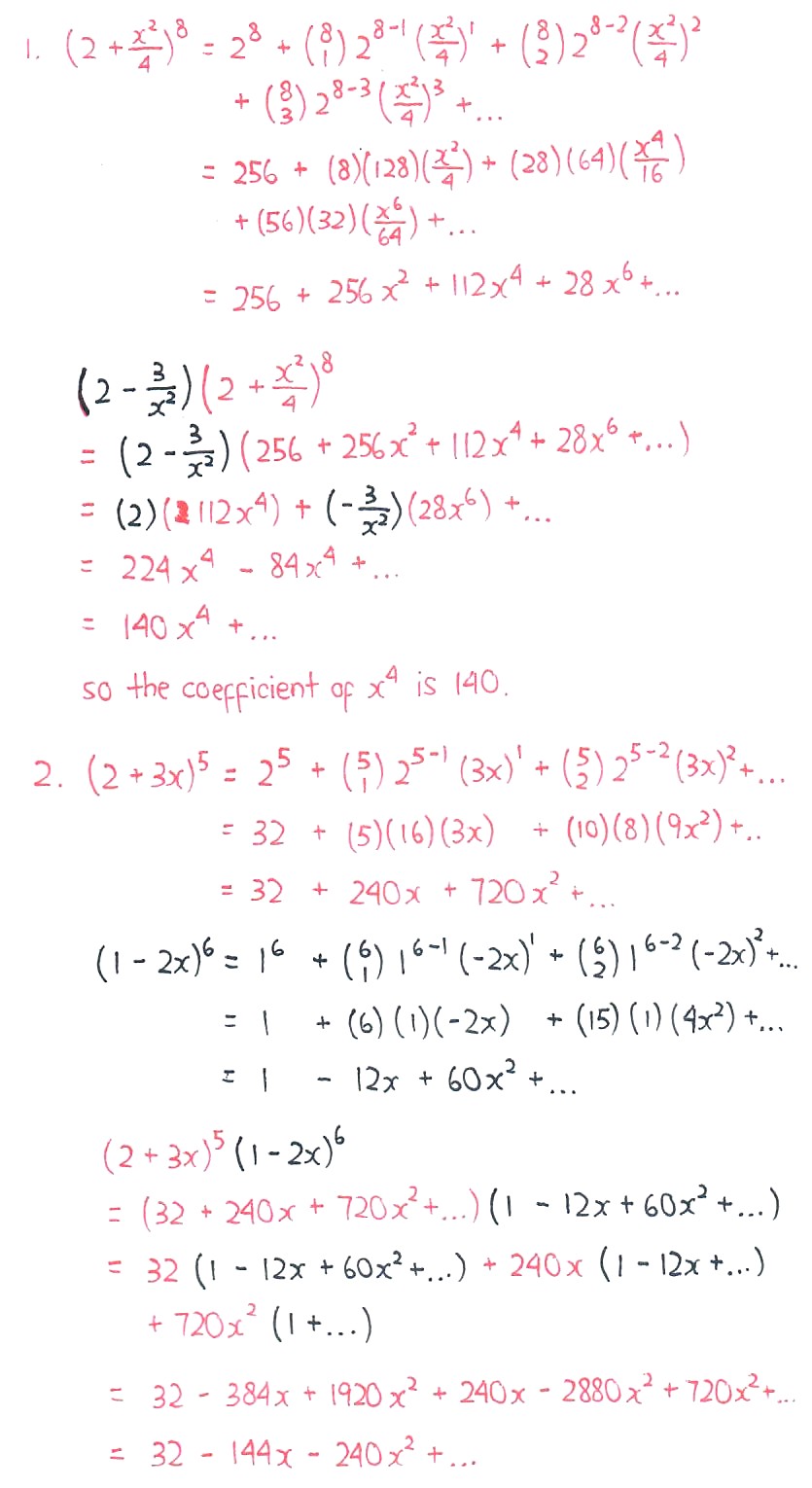Eric Nicholas K's answer to Kathy's Secondary 4 A Maths Singapore question.
done
{{ upvoteCount }} Upvotes
clear
{{ downvoteCount * -1 }} Downvotes
A note to point is that in the expansion of (a + b)^n, if the power of x in b > the power of x in a, then the expansion will appear in an ascending order. If the power of x in b < the power of x in a, then the expansion will appear in a descending order.
For example (2 + 3x)^5 will appear in ascending order, while (3x + 2)^5 will appear in descending order.
However, the question will often not try to mislead you in the expansion order. For example, they will not ask you to expand (2 + 3x)^5 in descending order.
For question 2, the first three terms in the expansion of each of (2 + 3x)^5 and (1 - 2x)^6 will contain terms up to x^2, so the first three terms in their product will also contain terms up to x^2 (unless the terms somehow cancel out, which is not expected to happen in most cases). Hence, in my writings in black for the expansion of the product of both terms, I did not include (1 - 12x + 60x^2) in the second and third tries because the output will contain terms of degree of x higher than 2.
For example (2 + 3x)^5 will appear in ascending order, while (3x + 2)^5 will appear in descending order.
However, the question will often not try to mislead you in the expansion order. For example, they will not ask you to expand (2 + 3x)^5 in descending order.
For question 2, the first three terms in the expansion of each of (2 + 3x)^5 and (1 - 2x)^6 will contain terms up to x^2, so the first three terms in their product will also contain terms up to x^2 (unless the terms somehow cancel out, which is not expected to happen in most cases). Hence, in my writings in black for the expansion of the product of both terms, I did not include (1 - 12x + 60x^2) in the second and third tries because the output will contain terms of degree of x higher than 2.
Date Posted:
5 years ago


